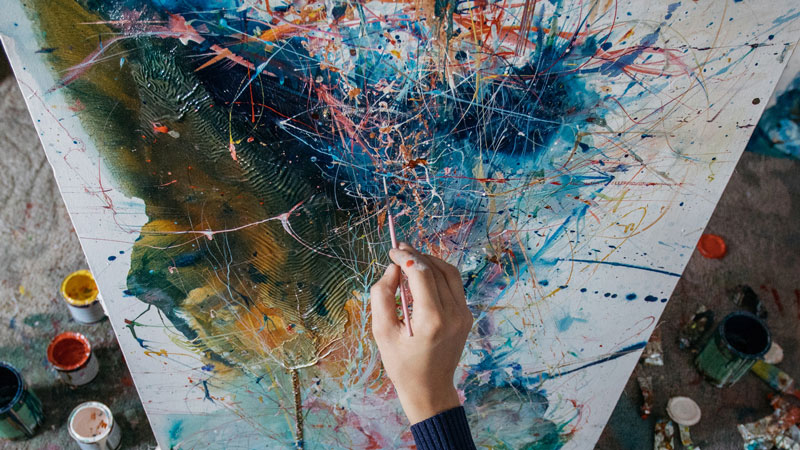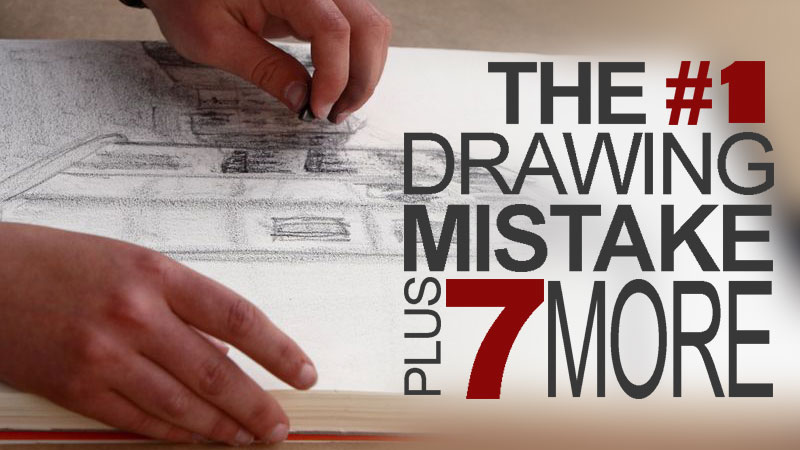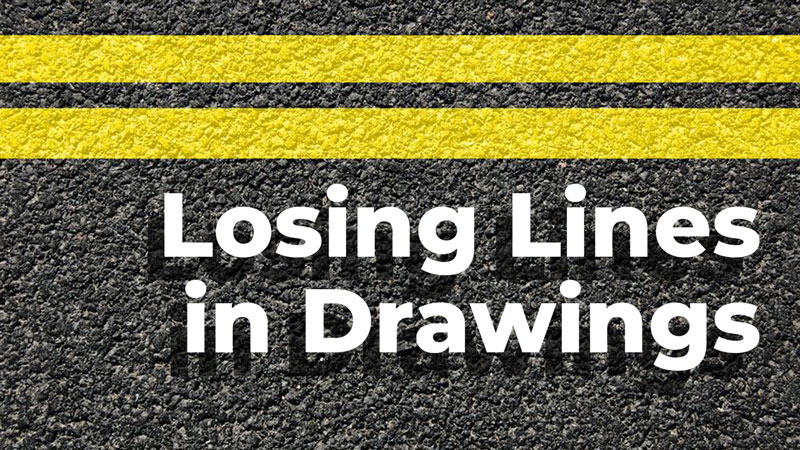
When it comes to representational drawing however, there comes a point when we need to push our concept and understanding of line and its purpose for defining edges.
Line doesn’t need to be used as a defining element for all edges. At least not in the way we may understand it to be.
How We Comprehend Line
Let’s first examine how we see line. Our minds usually translate and comprehend the edges of objects because of contrast. These areas of contrast may manifest through value, color, or texture. Our mind notices these differences and when start to draw them from observation, the natural tendency is to communicate them through the use of line.
If we are to take our drawing skills further, we must shift our use of line in a drawing. While it can and should be used for defining the shape and locations of objects within the picture plane (especially in the preliminary stages of the process), it should not become the only factor for defining objects.
Implied Lines
Because our concept of line stems from an observation of contrast, our tendency is to use it in our drawings in the same manner. Often times, the contrast that is added in the drawing is much stronger than the contrast that is actually observed or is drawn in a manner unlike what is observed. This happens because our analytical left brain intercedes in the drawing process and formulates a “plan” for communicating the edge.
Instead, implied lines should be used to define objects and create the necessary “edges” of objects.
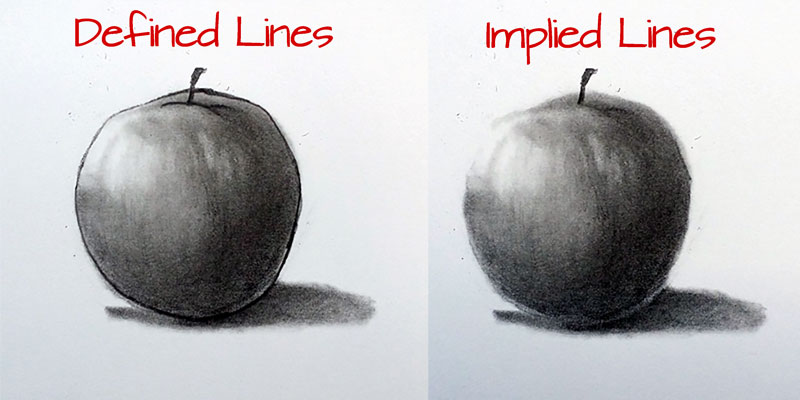
Implied lines are more closely related to the way our minds “see” objects. By understanding implied line and recognizing the approach that should be taken to create them, we can bypass our analytical left brain and create a drawing that is more accurate to what is observed.
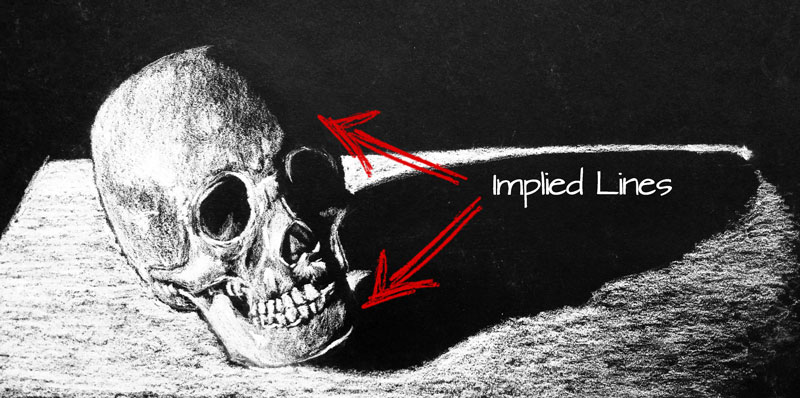
Implied lines most often happen on areas where the contrast between the object and the surrounding objects or elements is subtle. They may exist on the edge of an object that is receiving light, producing an area of highlight set against a light background. Or conversely, in an area of shadow against a dark background.
Practice This Concept
Once the concept of implied line is understood, it is easy to apply to our drawings. Understanding what we are actually seeing, without letting our “left brains” intercede is an essential part of representational drawing. Simply acknowledging the influence of our left brain on our use of line is a huge step.
We can reinforce this concept and train our minds to function as our eyes do by drawing without line completely.
Find a relatively simple object to draw. In “The Secrets to Drawing Course”, an egg is used for this exercise.
Place the object on a surface or in a setting that closely matches it’s texture, value, and color to make the exercise a bit more challenging.
Draw the entire scene within a defined picture plane on drawing paper or in your sketchbook, but do not use line. Instead, draw using only value. Allow the contrast that happens between the value, color, or texture create the “lines” in the drawing.
If so, join over 36,000 others that receive our newsletter with new drawing and painting lessons. Plus, check out three of our course videos and ebooks for free.



